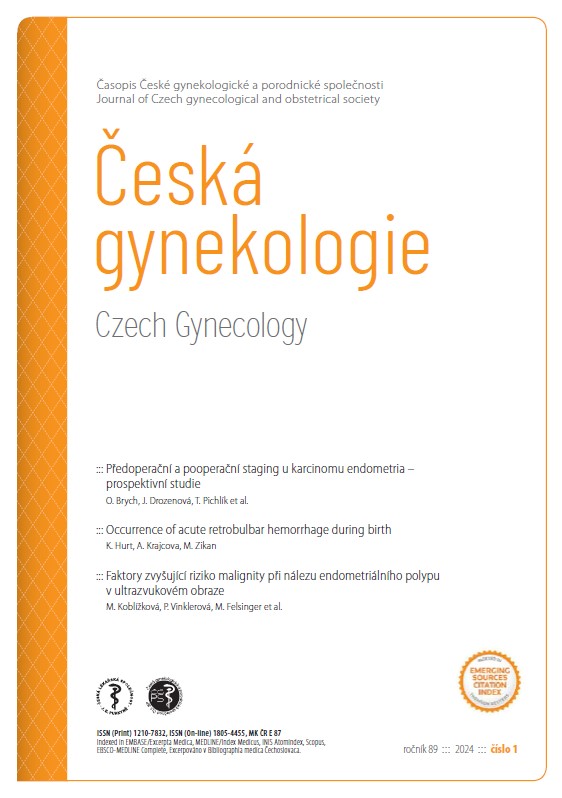Occurrence of acute retrobulbar hemorrhage during birth
Keywords:
retrobulbar hemorrhage, diplopia, orbital compartment syndrome, lateral canthotomy, cantholysis, intraocular pressureAbstract
Objective: Presentation of acute retrobulbar subperiostal hemorrhage (hematoma) in the course of delivery. The occurrence, possible threats and recommended methods of treatment are described.
Introduction: Acute retrobulbar hemorrhage is always a serious condition. Even if not connected with other ocular trauma, it could cause permanent blindness. The reason is based on constriction of the eye, decreasing of the blood supply and thus disruption of the oxygen supply to sensitive retinal tissues. After a short time, these tissues start to
deteriorate and lose their natural function. This event is often connected with exophthalmia and diplopia. The primary diagnostic procedure is to measure intraocular pressure (IOP). Even if the ideal dia gnostic tools are not accessible, performing a lateral canthotomy (event. with
inferior cantholysis) is recommended to relieve IOP in acute situations. Normal intraocular pressure is considered to be 8–21 mmHg.
Case report: Our 29-year-old female patient was in the second stage of delivery and suddenly got retrobulbar hemorrhage, resulting in exophthalmia and diplopia. Her baby was delivered shortly after the event. The following delivery course was normal, including her perineum repair and puerperium. Our patient was fortunate because her visual acuity and IOP were normal. Therefore, we chose an observational treatment strategy. After 5 weeks, we noted successful disintegration of the hematoma and decreased exophthalmia and diplopia without other consequences.
Conclusion: We described retrobulbar subperiostal bleeding in our patient in the course of delivery. We depicted possible threats that could result in blindness and described recommended methods of treatment. Even if such a situation is extremely rarely, we believe that knowledge of these guidelines could help medical professionals broaden their treatment options. This particularly occurs when a trained eye surgeon
is not available.


